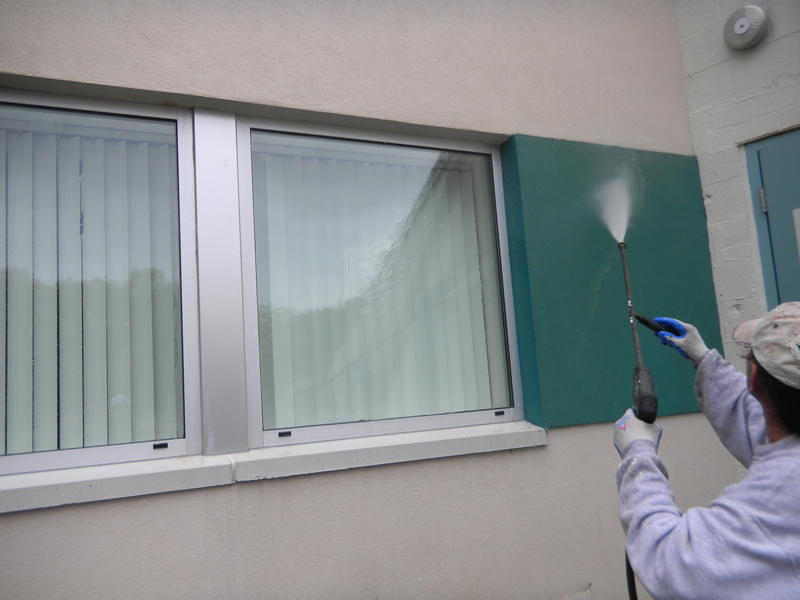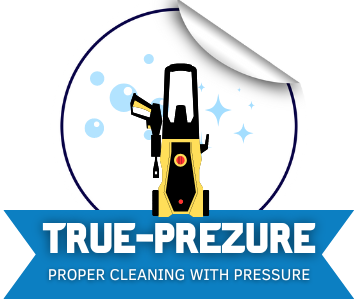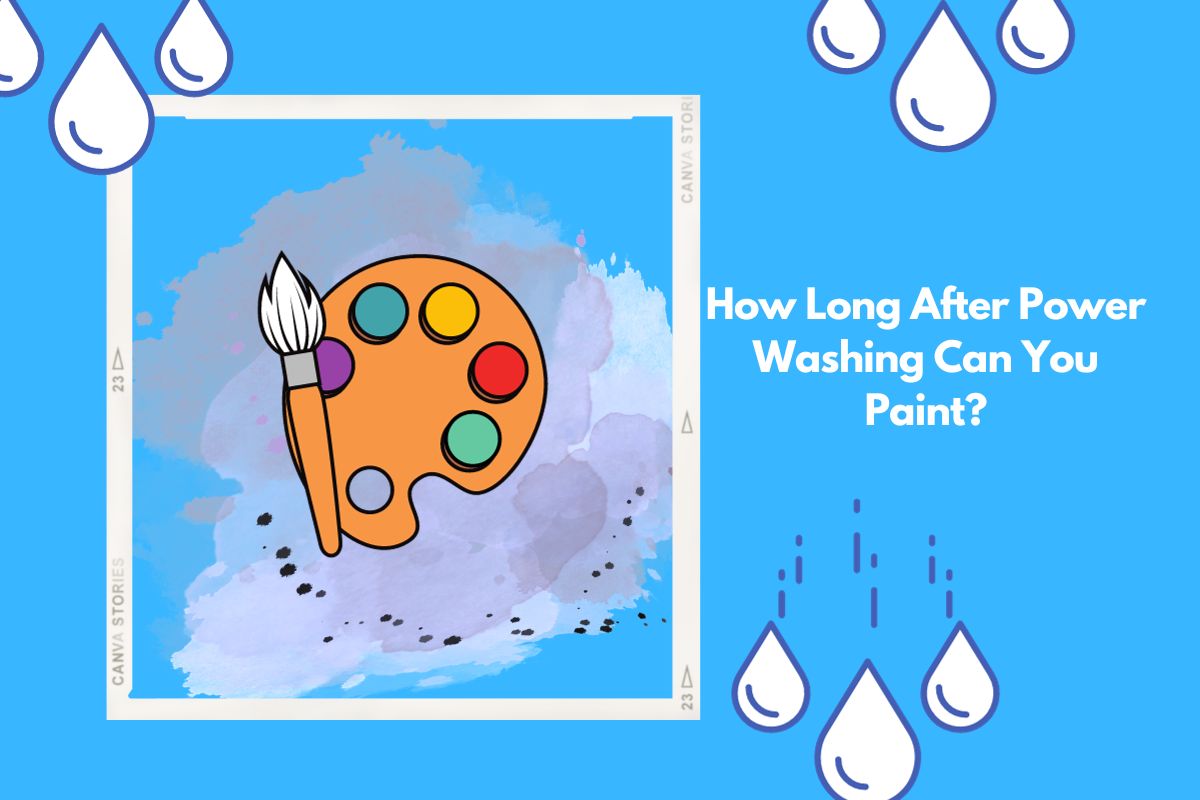Are you planning to give your home a fresh coat of paint? Before you start, it’s essential to prepare your surfaces properly.
One question that homeowners often ask is how long they should wait after power washing before painting. Pressure washing can be an effective way to remove dirt, grime, and other debris from exterior surfaces.
But if you paint too soon after pressure washing, the results may not last as long as expected. In this blog post, we’ll explore all the important details about how long after pressure washing can you paint and provide useful tips for preparing your home for the best results!
Prepare Your Home for Power Washing
Before you start power washing your home, it’s crucial to prepare the surface properly. Preparing your home for pressure washing will help ensure that the process is efficient and effective, which in turn can lead to long-lasting results.
Firstly, inspect the exterior surfaces of your house for any damages or cracks. If there are any issues with siding or roofing materials, make sure they’re fixed before starting power washing.
Secondly, remove all outdoor furniture and decor from near the walls and cover plants with plastic sheeting to avoid damage from cleaning solutions.
Thirdly, close all windows tightly and seal off entry points like air conditioning units or electrical outlets. This will prevent water infiltration into your interior spaces during the cleaning process.
Do not forget to wear safety gear such as eye protection glasses and gloves while handling a pressure washer machine. Following these tips will help you get better results when pressure washing your house!
Should I pressure wash my house before painting?
If you’re planning to paint your home, one question that may come to mind is whether or not you should pressure wash it first. The short answer is yes, you should. Pressure washing your house before painting can help ensure a clean and smooth surface for the new coat of paint.
Over time, dirt, grime, and other debris can accumulate on the exterior of your home. If left untreated, this buildup can hinder the adhesion of the new paint and possibly lead to chipping or peeling in the future. Additionally, pressure washing can remove any loose or flaking paint from previous coats.
However, it’s important to note that pressure washing isn’t always necessary for every situation. For instance, if your home has been painted recently or doesn’t have significant buildup on its exterior surfaces, then skipping this step may be acceptable.
In any case, if you do decide to pressure wash your house before painting make sure you follow proper safety precautions and use appropriate cleaning solutions suited for your specific siding material (i.e., vinyl vs brick).
What Are The Benefits Of Pressure Washing Before Painting?
Pressure washing is a crucial step to take before painting your home. It offers several benefits that make it an essential part of the preparation process. Firstly, pressure washing helps to remove dirt and debris from surfaces, ensuring proper adhesion of the paint. This means that the new coat will bond well with the surface, making it last longer.
Another benefit of pressure washing is that it eliminates any mildew or mold growth on your walls or deck. These fungi can cause serious health problems for you and your family if left unattended. Additionally, they can damage wood surfaces over time.
Furthermore, power washing removes chipping and peeling paint, which can compromise the appearance of your house after repainting. By removing these old layers of paint, you give yourself a clean slate to start fresh with a new layer that will adhere better and look more polished.
Power washing minimizes water absorption into porous materials like wood siding and decks by opening up their pores for better penetration when applying sealers or stains. This helps protect against moisture damage caused by rainwater or snowfall during winter months.
Pressure washing provides numerous benefits that are essential in preparing surfaces for painting or staining while maintaining good hygiene standards in our homes!
How Long After Pressure Washing Can You Paint?
One of the most common questions homeowners ask before painting their homes is how long they should wait after pressure washing. The answer to this question depends on several factors, such as weather conditions, the type of surface you washed and your location.
Typically speaking, it’s recommended to wait at least 24 hours after pressure washing before applying any paint or stain. This allows ample time for the surfaces to dry completely. However, if you live in a humid area or have recently experienced rainfall, then it may take longer for surfaces to dry out properly.
It’s important not only to wait but also to inspect your surfaces thoroughly before painting. Make sure all cracks and gaps are filled and sealed properly before applying paint so that moisture doesn’t get trapped underneath.
Another factor that can affect drying time is the type of material you’re working with. For example, wood will need more time than concrete or brick since it absorbs water more easily.
In summary, waiting at least 24 hours after pressure washing is generally recommended but be sure to consider other factors like weather conditions and surface material when deciding when it’s safe to start painting again.

What Are Useful Tips Before And After Pressure Washing?
Before you begin pressure washing your home or deck, there are a few things to consider. First and foremost, make sure that all windows are tightly closed to prevent water from seeping inside. It’s also important to remove any outdoor furniture or decor that may be in the way.
Another useful tip before pressure washing is to cover any plants or shrubs near the area with plastic sheeting. This will protect them from any chemicals used during the cleaning process.
After pressure washing, allow ample time for everything to dry completely. Don’t rush into painting right away! Give it at least 24 hours for wood surfaces and up to 48 hours for concrete surfaces.
It’s also important to inspect the surface after pressure washing for any damage that may have occurred during cleaning. If you notice any cracks or chips in paint or wood, address those issues before moving on with painting.
Dispose of any chemical solutions used properly and responsibly according to local regulations. By following these tips before and after power washing your home or deck, you’ll ensure a successful and safe project outcome!
How long after pressure washing can I paint my deck?
Pressure washing your deck is an essential step in preparing it for a fresh coat of paint. Once you have thoroughly power washed the surface, it’s important to wait until it’s completely dry before starting to paint.
The drying time after pressure washing your deck will depend on several factors such as weather conditions and the type of wood. Generally, a good rule of thumb is to wait at least 24-48 hours before painting or staining your deck.
It’s vital that the wood is fully dried out because if there’s any moisture remaining in the wood when you apply new paint or stain, it can cause bubbles and peeling later on. This ultimately results in additional costs and effort as you’ll need to remove all the old coats before applying any new ones.
Additionally, make sure that no water has accumulated between boards or other crevices. Use a cloth or towel to help speed up this process by removing excess moisture from these areas.
Be patient with waiting for your deck to fully dry after pressure washing so that you get long-lasting beautiful results!
How long does it take wood to dry after pressure washing?
After pressure washing your wooden deck or fence, it’s essential to let the wood dry thoroughly before painting. But how long does it take for the wood to dry? Well, that depends on several factors such as humidity levels, temperature, and airflow.
Typically, it takes 24-48 hours for the wood to dry after power washing. However, if you live in a humid area or if there is no direct sunlight and poor air circulation around your deck or fence, drying time may take longer. On the other hand, high temperatures with low humidity can cause moisture evaporation quickly; therefore, speeding up drying time.
It’s crucial to ensure that the wood is completely dry before painting because any remaining water could affect paint adhesion and lead to peeling or bubbling over time. To be sure of this process’s effectiveness results from using a moisture meter tool – which measures excess water content in surfaces like woods – are recommended.
In conclusion: Always allow enough time for your wooden surface to dry adequately before starting any paint project after power washing them. This will help ensure optimal adhesion of paint and prevent future damage caused by inadequate preparation.
How long does it take a house to dry after pressure washing?
One of the most common questions homeowners have after power washing their home is how long they need to wait before painting. However, it’s equally important to consider how long it takes for your house to dry completely.
The drying time can vary depending on various factors such as the humidity level, temperature, and airflow. In general, a house can take anywhere from 24-48 hours to dry after pressure washing. But again, this timeline can be affected by environmental conditions.
It’s essential that you don’t rush into painting until your home is entirely dry because any moisture can trap beneath the paint and cause bubbling or peeling in the future. Moreover, if you’re planning to apply primer or other coatings before painting, make sure that all surfaces are fully dry beforehand.
If possible, try to schedule your power-washing service on a sunny day with low humidity levels and mild temperatures so that your house dries faster. Additionally, providing enough ventilation throughout the entire process will help speed up the drying time of both horizontal and vertical surfaces.
To sum up: Always remember that patience is key when it comes to ensuring proper preparation before painting!
What Are Problems That May Occur While Pressure Washing?
Pressure washing may seem like a straightforward task, but there are some problems that can occur during the process. One of the most common issues is using too much pressure. High-pressure water streams can damage wood, stucco, and even concrete if not used correctly.
Another potential issue is using the wrong nozzle or tip for your pressure washer. Different surfaces require different nozzles and tips to avoid damage or uneven cleaning results. It’s essential to read the manufacturer’s instructions carefully before starting.
Another problem that can arise during pressure washing is accidentally hitting delicate objects around your home with the high-pressure stream of water. Be sure to remove any items such as potted plants from areas you plan on power washing beforehand.
It’s crucial to wear protective gear such as eye goggles and gloves when operating a pressure washer. The force of water coming out of these machines can be dangerous if it comes into contact with skin or eyes.
While pressure washing provides several benefits in preparing your home for painting, it’s essential to use caution and follow proper guidelines when undertaking this important step in preparation for painting.
Conclusion
Power washing your home before painting can be an essential step to ensure a successful and long-lasting paint job. It helps remove dirt, grime, mold, and other contaminants from the surfaces you want to paint. However, how long after pressure washing can you paint depends on several factors such as weather conditions, surface material, and humidity levels.

